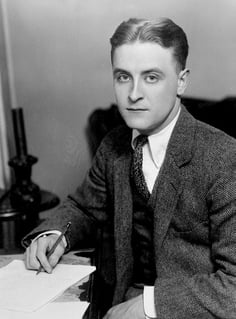Traditionally speaking, when you think of May Day one of the first things that comes to mind is dancing around a maypole wearing flower crowns. While this spring festival version of the holiday certainly has its place in literature (part of Shakespeare's A Midsummer Night's Dream takes place on May Day), May Day is more commonly celebrated worldwide today as International Workers Day, or in some places, Labor Day. What is the history of May Day? And how has May Day influenced literature?
A Brief History of May Day
In 1886, workers in Chicago rioted in what is now known as the Haymarket Affair. On May 4 that year, workers gathered to protest and demonstrate in attempt to have the work day reduced to eight hours. During an attempted police dispersion of protesters, a bomb was thrown into the crowd. The resulting explosion caused police to open fire on the crowd, killing four workers. Further violence took place in Wisconsin the following day with state militia killing seven, including two innocent bystanders.
 As a result, many nations around the world implemented an eight-hour work day, and May 1, the day chosen as International Worker's Day in remembrance of the event, has become a common day for protests and demonstrations.
As a result, many nations around the world implemented an eight-hour work day, and May 1, the day chosen as International Worker's Day in remembrance of the event, has become a common day for protests and demonstrations.
These protests made an indelible mark on literature, inspiring many writers to try and capture the feeling of the fight for the rights workers all over the world now benefit from. The following works exemplify the impact the Haymarket Affair and the implementation of International Workers Day has had on literature.
“May Day” by F. Scott Fitzgerald
 Though F. Scott Fitzgerald is best known for his novel, The Great Gatsby, his short story “May Day” is an impressive example of the short story form and focuses in on his common themes of class and society. Originally published in the literary magazine, Smart Set, the story takes place in 1919 during the weekend of the May Day Riots in Cleveland during which several dozen protesters were wounded and two were killed.
Though F. Scott Fitzgerald is best known for his novel, The Great Gatsby, his short story “May Day” is an impressive example of the short story form and focuses in on his common themes of class and society. Originally published in the literary magazine, Smart Set, the story takes place in 1919 during the weekend of the May Day Riots in Cleveland during which several dozen protesters were wounded and two were killed.
“Histrionics” by Lola Ridge
Lola Ridge was born Rose Emily Ridge in Ireland in 1873. The anarchist immigrated to the United States in 1907 and published her first book of poetry in 1918. Her work often centered around the struggles of the working class in the harsh, industrialized America. Though she was only thirteen and living in New Zealand at the time of the Haymarket Affair, her poem “Histrionics,” originally published in New Masses in 1926, focuses on the hanging of Albert Parsons, one of the men convicted of conspiracy to throw the bomb into the crowd that day. New Masses also published Alfred Hayes' poem “Into the Streets May First,” a poem focusing on a Communist workers rebellion, in 1934.
Mrs. Engels by Gavin McCrea
 Mrs. Engels was inspired by the life of Lizzie Burns, wife of The Condition of the Working Class in England author and The Communist Manifesto co-author Frederick Engels. Gavin McCrea's novel offers an imagined behind-the-scenes look at the lives of the Engels and Karl Marx during the time when their most influential works were written and published. Though the events of the novel take place before the Haymarket Affair, the works its central characters produce were a great influence on the ideas of the protesters.
Mrs. Engels was inspired by the life of Lizzie Burns, wife of The Condition of the Working Class in England author and The Communist Manifesto co-author Frederick Engels. Gavin McCrea's novel offers an imagined behind-the-scenes look at the lives of the Engels and Karl Marx during the time when their most influential works were written and published. Though the events of the novel take place before the Haymarket Affair, the works its central characters produce were a great influence on the ideas of the protesters.
May Day by John Sommerfield
Published in 1936, May Day's plot centers around an imagined uprising and takeover of London by communists. Sommerfield's novel was published by the Communist Party's publishing house. The World War II veteran was himself a communist and was active in the Communist Party Writers Group. May Day is considered his most important work. Sommerfield was also active in the Mass-Observation Project, a controversial attempt to chronicle the daily life of people all over England as a sort anthropological study.









